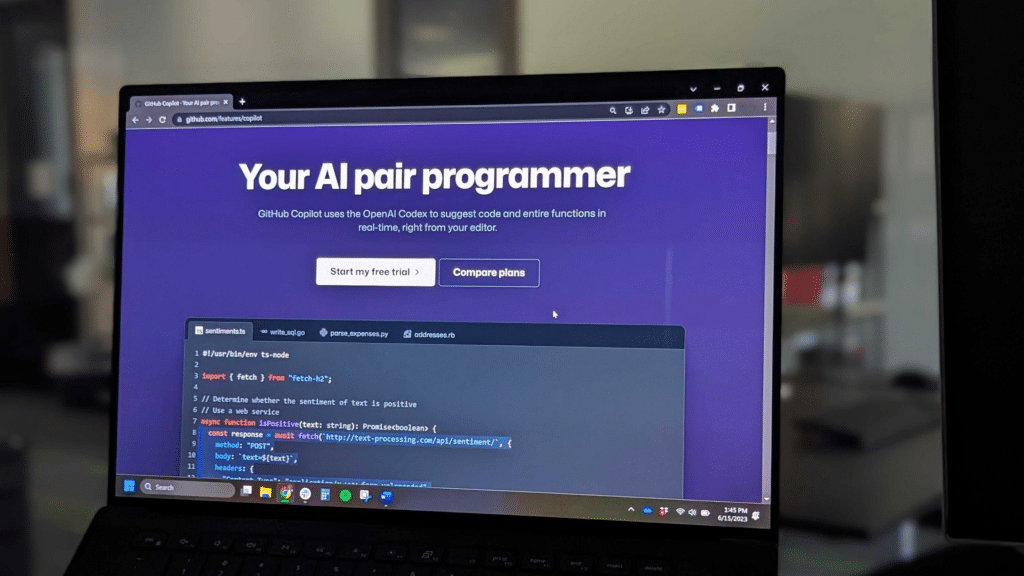Web development is continually evolving, paving the way for exciting new trends and technologies that shape how websites and applications are built and experienced.
Because the development world is constantly growing, I have two choices in my role as a Technical Lead and Senior Software Developer: make a conscious effort to keep up with the latest or risk falling behind.
In this article, I will dive into what I believe to be the future of web development, exploring the latest, new trends in web development that promise to revolutionize how we design and build for the web.
Web Design Trends
Responsive Web Design (RWD)
Responsive Web Design (RWD) has become essential to web development. With the increasing prevalence of mobile devices, websites must adapt to various screen sizes and resolutions.
RWD allows websites to dynamically adjust their layout, ensuring optimal viewing experiences across different devices. From smartphones to large desktop displays, users can seamlessly interact with websites that cater to their specific needs.
RWD not only enhances the user experience but also has a positive impact on search engine optimization (SEO). Google emphasizes mobile-friendly websites in its search rankings, meaning that websites optimized for responsiveness are more likely to rank higher. By catering to various screen sizes, RWD improves user engagement and accessibility while boosting SEO performance.
Web Accessibility and Inclusive Design
I’ve recently noticed web accessibility and inclusive design gaining traction as critical considerations in the web development process. Developers like myself are recognizing the importance of building websites and applications that are accessible to individuals with disabilities.
For example, screen readers can describe images to visually impaired users by incorporating alternative text for images. Similarly, using proper heading structure benefits screen readers and individuals who navigate the website entirely by keyboard input alone.
By adhering to accessibility guidelines and incorporating inclusive design principles, we can create digital experiences that cater to a broader audience, fostering inclusivity and equal access for all.
Responsive Animation Idle Load (RAIL)
Efficiency is key when it comes to web animations. The Responsive Animation Idle Load (RAIL) technique focuses on optimizing the performance of web animations and ensuring smooth visual experiences.
For example, imagine a website with a hero banner with an animated background. The RAIL technique dictates that the animation be scheduled to run during periods where the user is not actively engaging with the website, such as moments of inactivity. This allows the animation to run without competing with essential interactive tasks, improving overall performance and responsiveness. By leveraging the browser’s idle time, RAIL delivers animations more responsively and efficiently, preventing lag and improving overall user satisfaction.
Web Architecture Trends
WebAssembly (WASM) and JavaScript
WebAssembly (WASM) is revolutionizing web development by enabling developers to run code written in languages like C, C++, and Rust within web browsers. With its near-native performance, WebAssembly opens new possibilities for building resource-intensive web applications, such as gaming and multimedia applications.
However, while WASM offers incredible performance benefits for specific use cases, I believe it’s unlikely to replace JavaScript as the primary language for web development. WASM’s strengths lie in performance critical tasks or porting existing software to the web, complementing JavaScript rather than replacing it.
Streaming Server-Side Rendering
When it comes to the latest web development trends, they come and go in cycles. I’ve witnessed the dominance of Server-Side Rendered (SSR) applications with frameworks like Ruby on Rails, followed by the rise of Single Page Applications (SPAs). As server compute power becomes more affordable, I think we as developers are seeing a resurgence of interest in SSR.
Traditional SSR often causes delays in content delivery, leading to suboptimal user experiences. Streaming SSR addresses this challenge by adopting a progressive rendering approach. It allows the browser to render content incrementally, significantly reducing the Time to First Byte (TTFB). This approach enables faster loading and improved engagement, ensuring the users perceive the website as fast and responsive, particularly for content-rich applications. Streaming SSR is not a one size fits all approach however, and you should still consider other design approaches when starting a new project.
Implementing Streaming SSR can be more complex compared to traditional SSR or client-side rendering (CSR). It requires careful configuration and coordination between server and client to enable progressive content rendering. This added complexity may extend development timelines and demand comprehensive knowledge of the underlying technologies. By weighing the benefits and complexities, web developers can determine whether Streaming SSR is the right fit for their project. When implemented correctly, Streaming SSR can greatly enhance user experiences, ensuring faster and more engaging web applications.
Serverless Technologies
The rise of serverless technologies presents developers with an efficient and scalable approach to web development. With serverless architectures, developers can focus on writing code without the need for infrastructure management. Platforms like AWS Lambda and Azure Functions enable the execution of code in a scalable and cost-effective manner, empowering developers to deliver robust web applications while abstracting away the complexities of server management. However, it’s important to note that serverless architecture is not a silver bullet and may have drawbacks, such as increased complexity and potential vendor lock-in. Also, choosing a serverless architecture may require code to be written in a compatible manner.
For example, serverless functions commonly follow an event-driven, stateless architecture and often encourage the use of functions-as-a-service (FaaS). This may require developers to rethink and reorganize their codebase, breaking it down into smaller, more focused functions or services that can be independently deployed and scaled.
While serverless technologies bring scalability, cost-efficiency, and reduced operational overhead, it’s important to thoughtfully consider the compatibility of the codebase with the serverless paradigm. If done right, developers can reap the advantages of serverless architectures and deliver highly scalable and cost-effective web applications.
Trends in the Web Development Industry
Company Structures Shifting Towards Vertical Teams
Sometimes in web development, traditional large front-end (FE) and back-end (BE) teams can make it challenging to determine ownership and responsibility for specific aspects of the project. Companies like Facebook, Amazon, and Twitch have started adopting a different approach by forming vertical teams dedicated to these specific areas to address this issue.
For example, you may see a “chat” team that owns the chat functionality from top to bottom. By organizing teams in this way, it becomes clearer who owns what and fosters a sense of ownership, accountability, and expertise within those domains. Even on smaller projects, the concept of vertical slices helps streamline communication, decision-making, and overall project management.
Specialized Solutions for Subsets of the Market
Web development no longer follows a one-size-fits-all approach. As development practices become more efficient and team sizes get smaller, building specialized solutions for smaller market segments becomes feasible. In the past, the time it took to build software necessitated more generalized solutions. However, modern practices allow for targeted solutions that efficiently cater to specific needs.
This shift in approach will enable us to build highly tailored products, providing a better fit for customers. While larger platforms like AWS will remain significant, I doubt we will see the emergence of another tech tycoon any time soon. Instead, we may see a move towards abstractions built on top of these established platforms, enabling smaller, more specialized solutions.
AI Products vs AI Features
Artificial Intelligence (AI) has become an integral part of web development, empowering applications with intelligent features and capabilities. However, the industry is seeing a decline in standalone AI companies solely focused on developing AI tools.
Recently, I’ve noticed a shift of established applications and platforms integrating AI features into their existing products. Users are less inclined to switch ecosystems for an AI product when they can experience AI-powered capabilities within familiar tools. For example, applications like Notion and Photoshop have seamlessly integrated AI features, enhancing their already great user experiences. This integration enables users to benefit from AI without disrupting existing workflows or software environments.
Will AI Replace Developers?
The emergence of AI in web development has sparked debates about the future of web development as a profession. While AI technologies can automate certain repetitive tasks and assist developers in code generation, their role remains complementary rather than substitutive.
AI excels in tasks like code analysis, bug detection, and generating boilerplate code, freeing up developers’ time to focus on higher-level problem-solving, creativity, and user experience. Ultimately, I think developers will continue to play a vital role in crafting exceptional web experiences, with AI serving as a valuable accelerant.
Final Thoughts
As we continue to explore the future of web development, it’s clear that the latest web development trends and technologies hold immense potential to transform the industry. From responsive design and optimized animations to powerful web architectures and collaborative team structures, developers are paving the way for more accessible, efficient, and engaging web experiences.
As a developer myself, I’m embracing these advancements, and I encourage others to do the same. Together, we can shape a future of web development that continues to evolve, connecting people across the globe in innovative and immersive ways.




